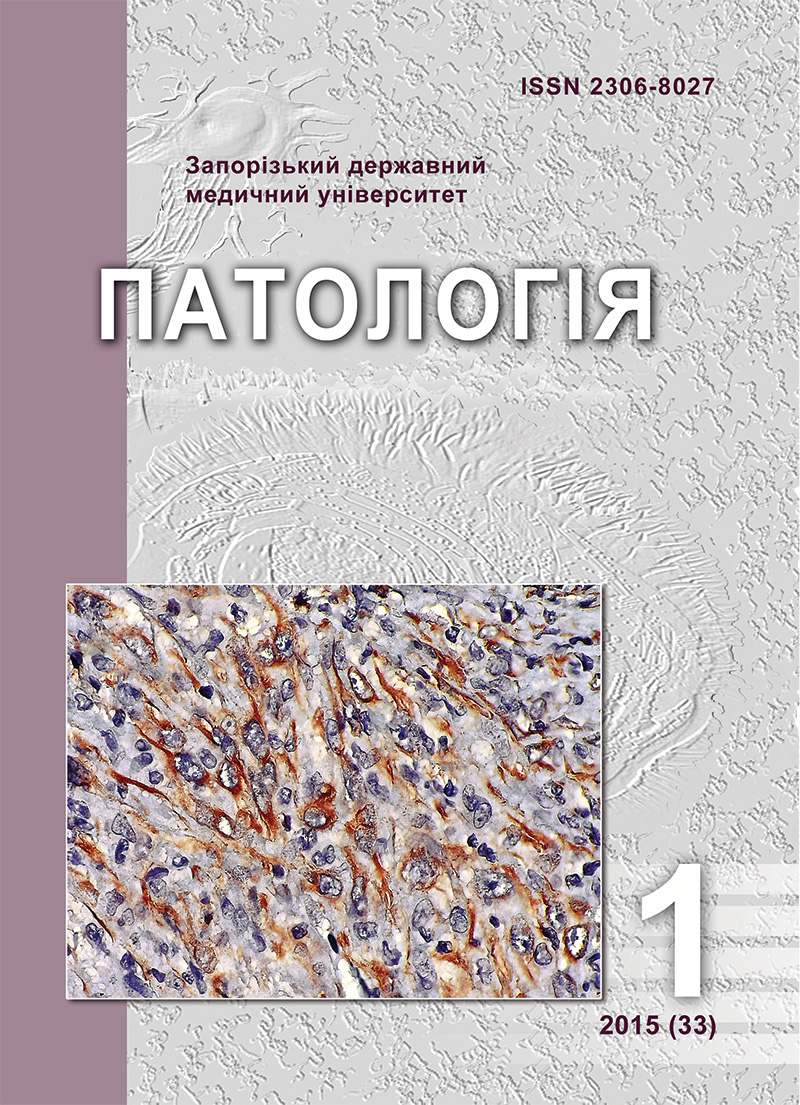Thymidine phosphorylase and its possible correlation with the lung cancer phenotype features
DOI:
https://doi.org/10.14739/2310-1237.2015.1.42882Keywords:
Thymidine Phosphorylase, Lung Neoplasms, Neovascularization PathologicAbstract
The tumor phenotype investigation is necessary for lung cancer drug therapy optimization. For this purpose is perspective to use the biochemical markers of angiogenesis. Thymidine phosphorylase may be one of them.
Aim. The aim of study was to evaluate the correlation between the enzyme activity in tumors and the levels of expression of the vascular endothelial marker CD34.
Methods and results. They were examined spectrophotometrically and by the immunohistochemical method, respectively, in 25 samples of lung cancer tissues. It was shown that its activity in tumors is higher as compared to non-neoplastic adjacent tissues (from 30 to150 nmol/min·mg; in 20 cases from total number). The enzyme activity changes were dependent of the levels of the CD 34, a positive correlation between them was shown (the index of Spearman’s rank correlation, i.e. ρ = 0,668; p<0,05).
Conclusion. These findings suggest the possibility of using thymidine phosphorylase as a biochemical marker of angiogenesis, its relationship with the lung cancer phenotype features.
References
Grimminger, P., Schneider, P., Metzger, R., & Halsor, E. (2010). Low thymidylate synthase, thymidine phosphorylase, and dihydropyrimidine dehydrogenase mRNA expression correlate with prolonged survival in resected non–small-cell lung cancer. Clinical Lung Cancer, 11(5), 328–334.
Avtandilov, G. G. (1980). Vvedenie v kolichestvennuyu patologicheskuyu morfologiyu [The introduction into the measuring pathological morphology]. Moscow: Medicina. [in Russian].
Borzenko, В. G., Bakurova, E. M., Popovich, Yu. A., Sidyuk, E. A., & Popovich, A. Y. (2013). Activity of thymidilate “salvage pathway” enzymes in human gastric cancer and blood serum: correlation with treatment modalities. Experimental Oncology, 35(1), 37–40.
Uchimiya, H., Furukawa, T., Okamoto, M., & Tsuchida, A. (2002). Suppression of thymidine phosphorylase-mediated angiogenesis and tumor growth by 2-deoxy-L-ribose. Cancer Research, 62(10), 2834–2839.
Ikeguchi, M., Oka, S., Saito, H., Yamamoto, S., & Kitadai, Y. (1999). The expression of thymidine phosphorylase and its correlation with angiogenesis in gastric adenocarcinoma. Cancer Research, 19(5), 4001–4005.
Downloads
How to Cite
Issue
Section
License
Authors who publish with this journal agree to the following terms:- Authors retain copyright and grant the journal right of first publication with the work simultaneously licensed under a Creative Commons Attribution License that allows others to share the work with an acknowledgement of the work's authorship and initial publication in this journal.

- Authors are able to enter into separate, additional contractual arrangements for the non-exclusive distribution of the journal's published version of the work (e.g., post it to an institutional repository or publish it in a book), with an acknowledgement of its initial publication in this journal.
- Authors are permitted and encouraged to post their work online (e.g., in institutional repositories or on their website) prior to and during the submission process, as it can lead to productive exchanges, as well as earlier and greater citation of published work (SeeThe Effect of Open Access).

